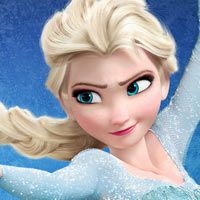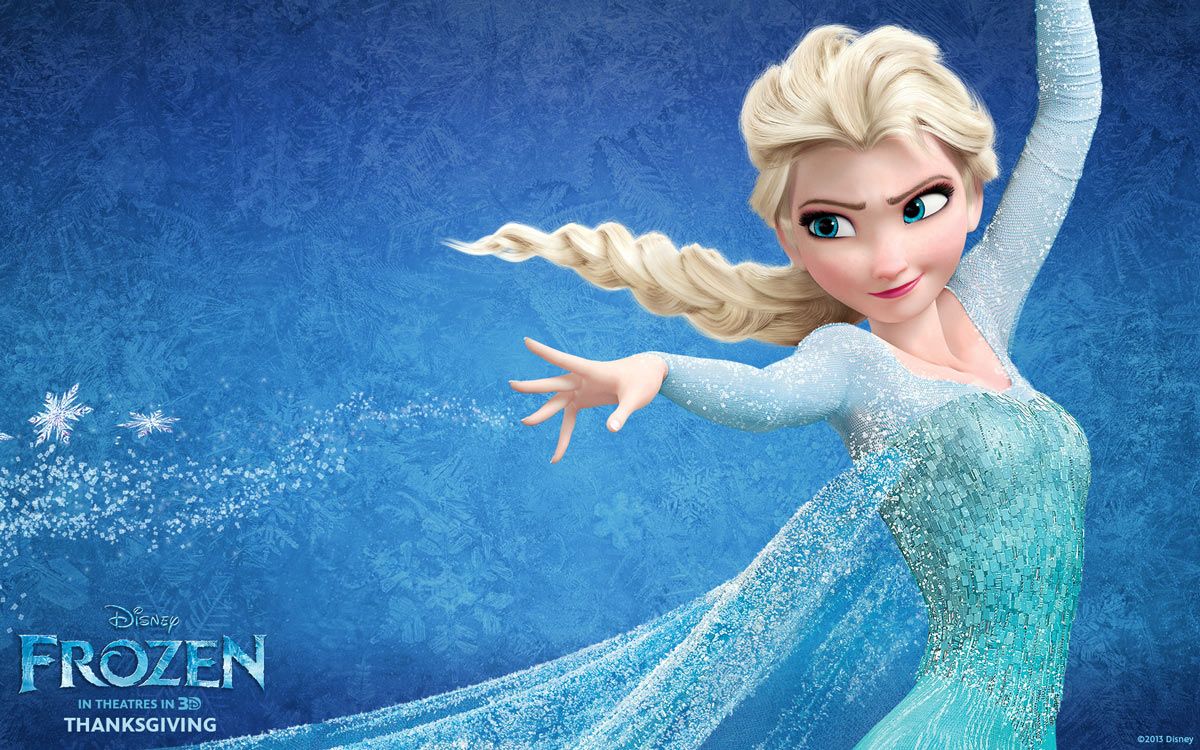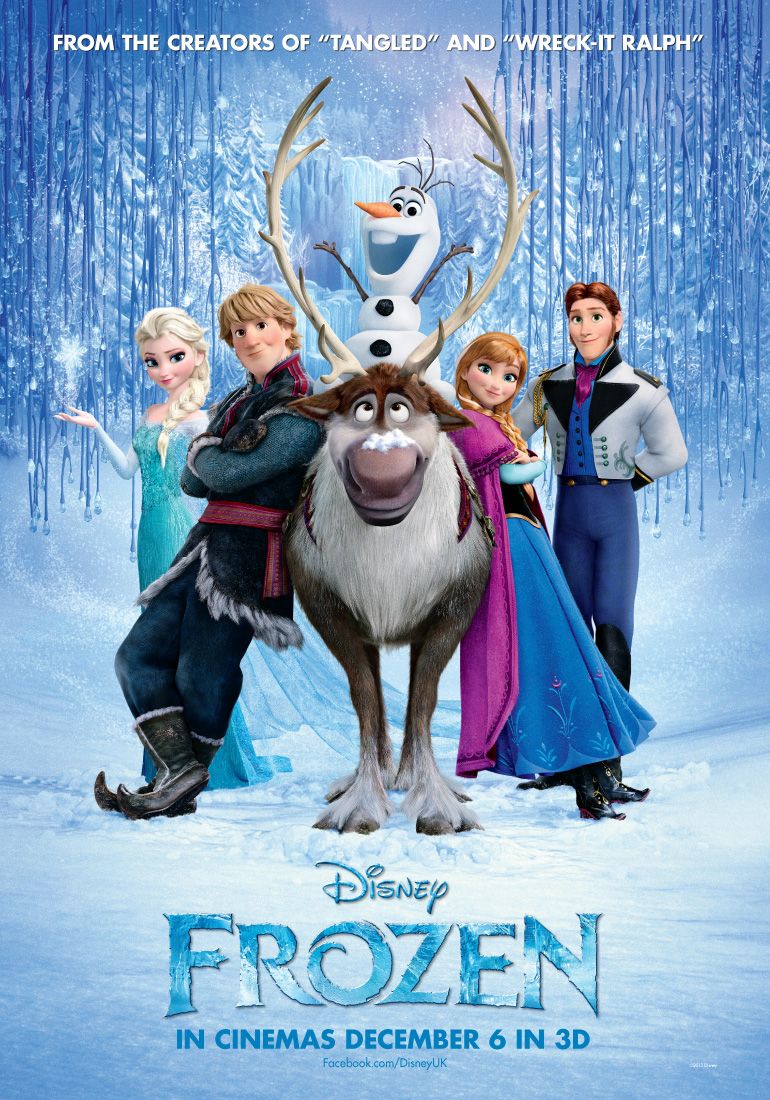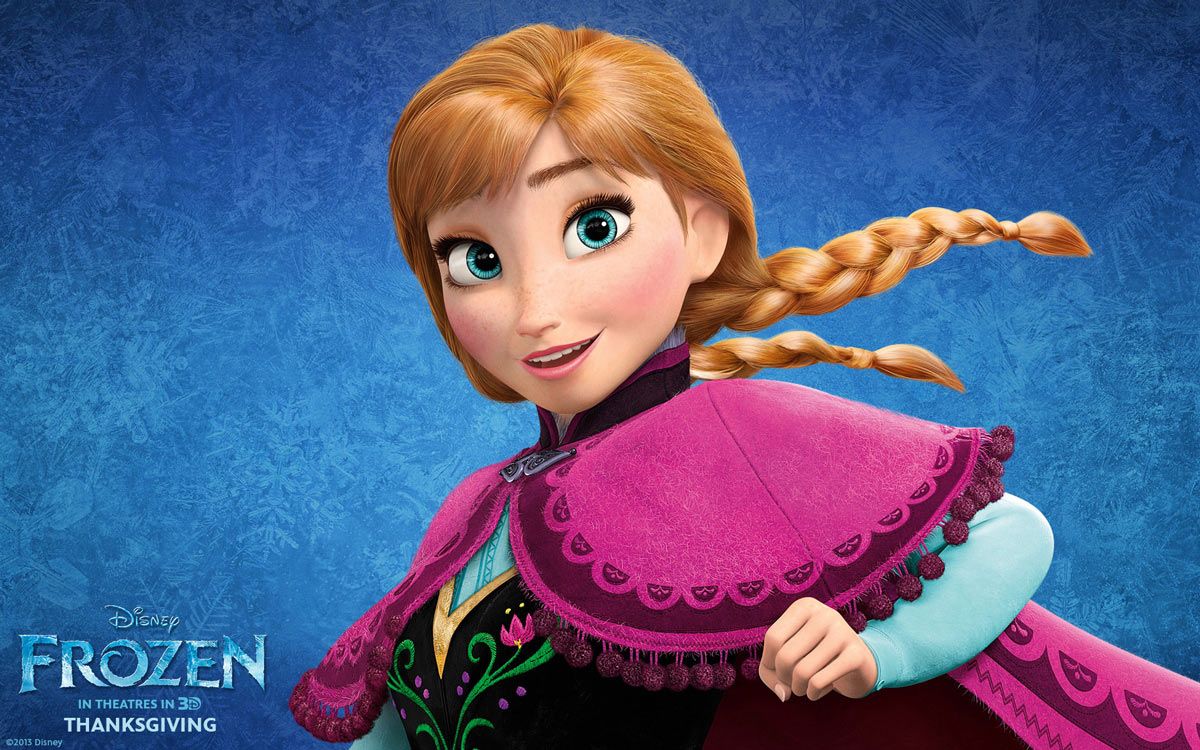If Pixar was the animated powerhouse that ruled the ‘00s, its parent company Disney has taken that mantle over the last three or four years with films like Tangled, Wreck-It Ralph and now Frozen, the most recent recipient of the Best Animated Feature Academy Award, ranking among the studio’s biggest-ever successes. But despite its clarity of vision and the virtuosity of execution, directors Chris Buck and Jennifer Lee went through multiple permutations as they found the structure, themes and story of this beautiful deconstruction of princess formulas, and then faced even more challenges as they figured out how best to market a smart, evocative and complex film to audiences.
Spinoff Online spoke to Lee and Buck at the recent Los Angeles press day for the Frozen Blu-ray, now in stores. In addition to discussing the work that went into getting this unconventional story together, the duo discussed its marketing materials, which overshadowed the actual heroes of the movie with the admittedly iconic snowman who stole audiences’ hearts, and revealed the process by which Disney has become such a powerful, and fearless, creative force.
Spinoff Online: Kristen Bell has said that Frozen went through numerous permutations over the process of finishing it. When did you lock in the iconoclastic core concept of the film?
Jennifer Lee: Well, I think your original concept stayed forever, so maybe if you want to mention that…
Chris Buck: Well, I always wanted to try something a bit different when it came to the definition of true love. We've done a certain one many times, and so are there other forms of it – how can we play with that? So that was one of the initial ideas.
Lee: Yeah. And the notion of her sacrificing herself for someone and it wasn't the prince. It was more of a redemption story, I believe.
Buck: At that point, yes, it was. Another pivotal thing was making the two sisters, they were not originally sisters and that gave such emotional depth to the whole story and everybody felt it. Everybody at the studio went, oh, that's a great idea, and it seemed to really resonate.
Lee: Yeah. And I think the third main one was “Let It Go,” because we were still keeping Elsa villainous, but we were struggling because we were also wrestling with this theme of more love versus fear instead of good versus evil. And that was more compelling. And Bobby and Kristen decided to work on a song to say what it would be like if she were just free and that was “Let It Go.” And the minute we heard it, we knew we could break free from the villain and do more complex things with her character. And that was the biggest – I think the final giant breakthrough. That was about like maybe about a year out, a year and a half out from the final.
Frozen has a number of great hallmarks of Disney films that it turns on their head. What was the challenge of taking those conventions and approaching them from a different angle?
Lee: I think the interesting thing was we never sat down and said, "We're going to flip the tropes on their head." What we'd had was the end we were working towards, which was that it wasn't romantic love, it was her sister, and we had to support two stories. And there are certain things that we all get that we certainly took advantage of, the tropes that can get us through faster, but we knew where we were going. But I think the thing for us though we never ever wanted to poke fun as much as to be sincere – but also speak to why are those things there. I mean, that love-at-first-sight romantic notion, we all buy into that and then real love is not like that. So then sort of say, "There is this element to Anna's journey." That is what you go through in life when you fall in love for the first time, when your heart's broken, when you are a close sister and then she shuts you out. I think we said, "If we stay sincere, we can still flip them on their heads without mocking them, because they're actually there because they're part of the human experience or longing that there's something to it." And we didn't want to disrespect that as much as say, "Well, there are other ways it happens that aren't quite so simple."
Buck: A lot of those ideas, they work for the time that those movies were made.
Lee: And what was needed then.
Buck: This was just a movie we made today of how we feel about things and how society is today.
With “Let It Go” giving you license to create a more complex character in Elsa, how did that further inform the balance of the character? During Elsa's initial development as a villain, was it a concern that audiences might not find the character redeemable?
Lee: Yeah, that was a huge struggle for a long, long time. I think what really helped us was when we stopped – because there was language you use and you'd realize you use it over and over again. “Once she turns bad,” “when she turns bad” -- we stopped and said, "What we need to do is walk through what she's going through." What we found is by letting fear be the enemy, and keeping it rooted in fear, [we could preserve her likeability]. [A previous version of Elsa] used to hurt Anna deliberately, and I could never get past that. I just couldn't ever find the redemption. I also just didn't believe her. It was such a hard road to get to, but fear strikes Anna, and that I got. I think it was letting her go to that darker place but being ruled by fear allowed us to push, but not hit, that irredeemable [quality].
Buck: It took a long time. But she even goes out of her way throughout that to say that her whole journey of staying away from Anna is to protect Anna. It's all about protecting her. It's never, “I hate you and I don't want to be near you.” In this it's always protection, protection, protection. She was very, very complicated for us.
Lee: The most challenging character I think. At times we thought it was Olaf, but I think at the end of the day, it was Elsa.
Buck: Yeah, she was tough, but we're very proud of the way she came out and I think the audience has responded well to her.
Absolutely. Speaking of Olaf, he came off as immediately and totally lovable. When did you know that he really had the opportunity to break out in the way that he has?
Lee: You had faith from the start. He did.
Buck: I had faith from the start. I just knew that this kind of character everybody would love, but he needed work. I mean, he's going to be a visual treat to watch; a head falls off and arms fall off. He's a funny little guy. But then Jen kept pushing for, "Well, what is his purpose in the story?"
Lee: The screenwriter in me.
Buck: I know he's funny—
Lee: But why is he here?
Buck: And that's why we used the idea of the two girls making him when times were good between them and how he represents that moment in their lives throughout the movie. There's much more depth to Olaf than just as a funny character. Even when Elsa's offscreen, he's a reminder – he's with Anna for the rest of the movie, and so he is a reminder of that relationship.
Lee: It's kind of a little bundle of innocent hope, which I think gets you through a lot. And it's an affirmation for Anna -- "I should keep going because [Elsa] obviously deep down feels what I feel." The rest was getting Josh [Gad]. Remember hearing Josh's voice when they animated Olaf to his voice? He was on a talk show and they just took the voice and I dropped to my knees and went, "Please get him!" because I understood Olaf immediately hearing Josh. It was so helpful, because he was the hardest to write, but he wasn't as challenging as Elsa in terms of how extreme to make his character.
Buck: [Josh], along with the others, really helped us shape the characters when they came in to do the recording. Josh did some great stuff. We worked in the room with him. We created Olaf with him. Anna's the same way with Kristen Bell. She came in and really gave her opinion of what she thought Anna could be and how she could say it and things like that. They all did. They all came in and brought their own take on these characters, which was just really kind of special.
After watching Frozen, some made comparisons between Elsa’s castle and Dr. Manhattan's clock structure in Watchmen. Did Watchmen have any influence on the design of Elsa's castle in Frozen? They seem to have a common semi-mechanical design.
Buck: I haven't even seen Watchmen.
Lee: I haven't either. It's a question probably for the art director, because for us the castle was based on a snowflake and the branching and plating. And instead of just going out, we started going vertical.
Buck: Yeah. That was the inspiration there.
Lee: But if you think about that, in terms of clocks and things, that's very much that—
Buck: That cog and wheel thing.
Lee: The cog in nature. It's funny how it might actually just sort of be an organic thing, but for us it was that.
Buck: The only research we did [for Elsa’s castle] was we went to an ice hotel up in Canada just to see what a structure like that would be like, snow and ice.
How much input did you have for the Frozen advertising campaign? The full film has an admittedly deep and complicated story that didn't seem to come across in the ads, which focused more on Olaf rather than the other characters.
Lee: One of the things we knew for sure was we couldn't show the qualities of this film in one campaign. There was so much that the film was, and it's very easy to confuse the audience if they're not seeing the film. I appreciate how [the campaign] teased the world with these silly characters, and then gave you Anna for the first time, and then gave you the music for the first time. It was a slow build and then I think they were relying in the word of mouth a lot in that they knew, they believed.
I say “they” with marketing because we trust them. I mean, I'm the filmmaker; I'm not a marketing person. We would work with them, but in sort of supporting, “Anna wouldn't do that, this is how the characters are.” But to trust that part of it was what it takes when you're trying to reach audiences of all ages. It's not as simple as giving them the whole story, because in a 90 second clip it's often too confusing and it can alienate people. In retrospect, we were like, "Hey, it worked," but I now have a great appreciation for how hard it is when you have a film that's so big and complex. What's so funny is I always think of E.T. That's the one to me, the campaign where when I went into the film, it was so beyond what I ever expected.
Buck: Yeah, and because of our test screen that we had done in June with all ages, we knew that the movie played with everyone. But their goal was to get people in the seats, and if you did another campaign or something, that might confuse some people that would go, “I don't like this” or “I don't like a certain thing.” Everybody that went there liked it. It was a matter of, "How do we get people in there that may have certain prejudices to certain types of films to at least go to this movie?" … It was a struggle.
Lee: But it's always a struggle. I mean particularly the hardest thing for filmmakers though is you're slowly letting go of the thing you've been obsessively working on for years and you care about so much. To have a bit of faith—
Buck: I don't want to show it all, in a way, but the movie’s so big and we want to show this and we want to show this, and they're like—
Lee: "Calm down."
Given the success of the film, how much has that sort of emboldened you as filmmakers to develop more modern fairy tales that challenge -- or at least question -- some of the traditional concepts of the genre? Do you feel like Disney in general is eager to further explore those kinds of ideas given their history?
Lee: You know, I think what's an interesting thing that a lot of people probably don't realize about particularly animation is we say Disney, but for us it's John [Lassiter] and Ed [Catmull] and then about a dozen directors. We work on what moves us. We come up with story ideas and pitch them to each other. It's very much about what moves us and not sort of looking at specifically the Disney legacy. If it moves us and it's tied to it -- [for example], Frozen did great but Wreck-It Ralph was something very different -- I think the goal is to keep trying fresh new creative ideas and pushing them beyond even your own expectations and driving them that way, which is what we've been trying to do. We really felt like every department pushed themselves beyond what they've done before. I think if there's anything for the future for us, it’s to not settle and keep pushing the stories. But it's a surprise to the world there's nothing like Disney coming to us. It's really just there are two of us in a room and we're talking about it, we pitch it to John and 12 other people, we start messing with it and we show it to the artists. It's much more intimate than that, I think, and so maybe if that's starting to affect [the process], I think that's cool.
Frozen is available now on DVD, Blu-ray and digital download.




